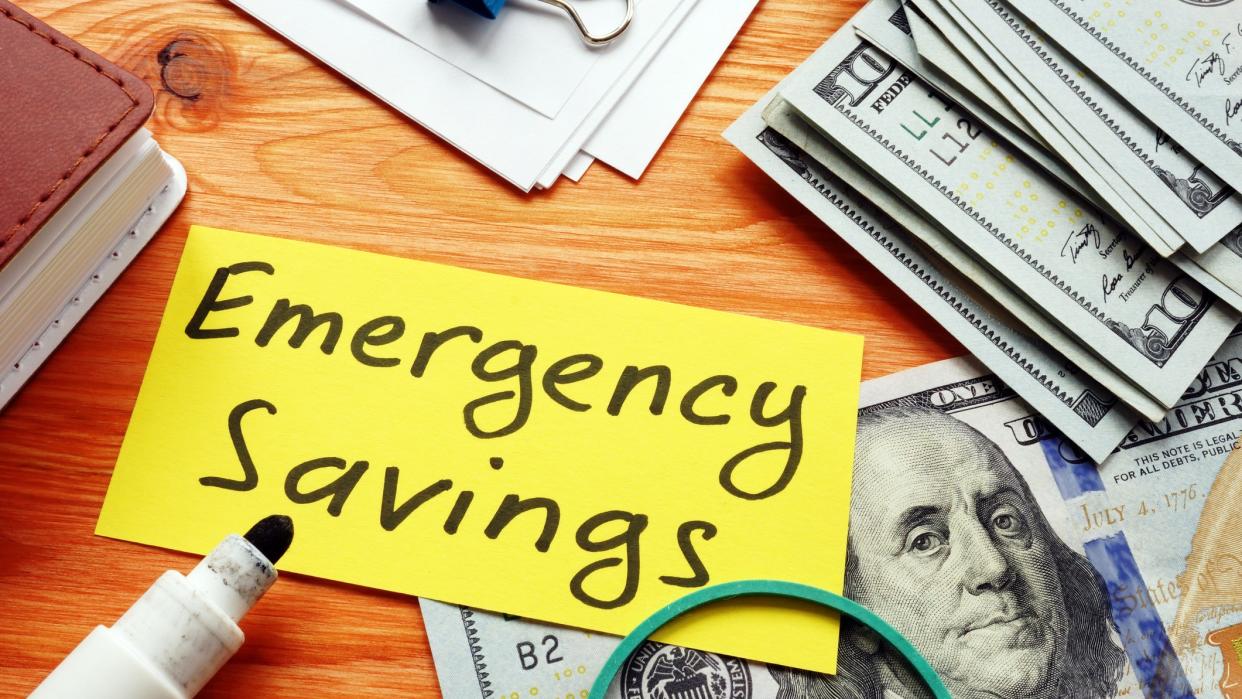Here’s How You Can Boost That Emergency Fund 8 Times Over

With the looming fears of inflation growing day by day, it’s time to rethink where you keep your hard-earned emergency fund.
See: Here’s How Much Emergency Cash You Need Stashed If an Emergency Happens
Find: 5 Times Inflation Is Actually Good for Your Finances
Americans have an unprecedented level of cash in savings as a result of the pandemic. The Kansas City Fed reports a sharp increase in savings as a percentage of disposable income from 7.2% in December 2019 to 33.7% in April 2020. That’s because quarantine and lockdowns prevented people from spending money — but now, with inflation levels surging, that cash is losing value, and fast.
High-yield savings accounts can offer two, three, even eight times more of a yield on your money than a traditional savings account. It’s a viable option to store emergency savings while earning more interest with very little investment risk. While typical savings accounts offer less than 1%, high-yield savings accounts commonly pay interest rates in the range of 1% to 2.2%, according to Smart Asset.
You receive the same federal insurance on a high-yield savings account as on a regular savings account, meaning the FDIC backs each account up to $250,000.
Important to Note
High-yield savings account are still savings accounts, which makes them subject to Regulation D. This means you cannot make more than six convenience withdrawals per cycle. Convenience withdrawals include transfers to other accounts, even within the same bank, as well as automatic transfers for bill pay, ACH withdrawal, point of sale transactions with a debit card and transfers made via check, debit card or over the phone.
See: What Is a High-Yield Savings Account? Here’s Everything You Need to Know
Find: What Would the Benefit of Raising Interest Rates Right Now Be?
So Why Doesn’t Everyone Have One?
High-yield savings accounts are not as well-known or as routinely recommended as regular savings accounts. When you open a checking account at a traditional bank, the bank ofen tacks on a regular savings account to encourage you to keep all your accounts at the same institution.
Online banks are, by and large, the marketplace for high-yield savings accounts, which can also add to people’s hesitancy to open one. Even credit card companies offer high-yield savings accounts, which can make people feel as though it is a scam or a ploy to eventually wring more money out of them.
If you are interested in a high-yield account, now is the best time to get started. Inflation has already begun chipping away at the value of cash. If interest rates increase in the next year or so, as they are expected to, compound interest will grow your account even further.
More From GOBankingRates
Last updated: August 2, 2021
This article originally appeared on GOBankingRates.com: Here’s How You Can Boost That Emergency Fund 8 Times Over

